Spatio-Temporal Analysis of Surface Urban Heat Island and Canopy Layer Heat Island in Beijing
Abstract
:1. Introduction
2. Materials and Methods
2.1. Study Area and Data
2.2. Methodology
3. Results and Analysis
3.1. Gaussian Capacity Modeling Results
3.2. Analysis of the Characteristics of Urban Heat Island Changes
3.2.1. Daily Time Scale
3.2.2. Monthly Time Scale
3.2.3. Annual Timescale
4. Discussion
4.1. Analysis of Changes in Intensity and Center of SUHI and CLHI
4.2. Analysis of Changes in SUHI and CLHI Ellipsoids
4.3. Analysis of Changes in Center and Direction of SUHI and CLHI
5. Conclusions
- (1)
- The monthly mean heat island intensities of SUHI and CLHI show a V-shaped distribution at night, with the strongest intensity in winter and the weakest in summer, and an inverted V-shaped distribution during the day, with the strongest intensity in summer and the weakest in winter.
- (2)
- The centers of SUHI and CLHI are concentrated at night, with longitude mainly in the range of 116.3°~116.4° E, and the latitude mainly in the range of 39.90°~39.95° N; they are scattered during the day, with longitude mainly in the range of 116.2°~116.5° E, and latitude mainly in the range of 39.7°~40.0° N. They move eastward and northward during hot seasons, and they move westward and southward during cold seasons.
- (3)
- The monthly average ellipse area of daytime SUHI and CLHI varies greatly among months; the corresponding maximum differences are 2662 km2 and 2293 km2, respectively. Meanwhile, nighttime values vary slightly; the corresponding maximum differences are 484 km2 and 265 km2, respectively.
- (4)
- The average area as a whole is on the rise. The annual average area of SUHI and CLHI has steadily increased over time; every year, the center of the heat island has moved eastward, and the direction of the heat island has gradually shifted towards the northeast–southwest direction.
Author Contributions
Funding
Institutional Review Board Statement
Informed Consent Statement
Data Availability Statement
Conflicts of Interest
Abbreviations
| Full Name | Abbreviation |
| Surface Urban Heat Island | SUHI |
| Canopy Layer Heat Island | CLHI |
| Moderate-Resolution Imaging Spectroradiometer | MODIS |
| Advanced Very High Resolution Radiometer | AVHRR |
| Enhanced Thematic Mapper Plus | ETM+ |
| Normalized Vegetation Index | NDVI |
| Standard Deviation Ellipse | SED |
| Latent Heat Flux | LHF |
| Net Solar Radiation | NSR |
References
- Zheng, Y.; Ren, C.; Shi, Y.; Yim, S.H.L.; Lai, D.Y.F.; Xu, Y.; Fang, C.; Li, W. Mapping the Spatial Distribution of Nocturnal Urban Heat Island Based on Local Climate Zone Framework. Build. Environ. 2023, 234, 110197. [Google Scholar] [CrossRef]
- Feng, J.-L.; Cai, X.-M.; Chapman, L. Impact of Atmospheric Conditions and Levels of Urbanization on the Relationship between Nocturnal Surface and Urban Canopy Heat Islands. Q. J. R. Meteorol. Soc. 2019, 145, 3284–3299. [Google Scholar] [CrossRef]
- Wang, Y.; Zhan, Q.; Ouyang, W. How to Quantify the Relationship between Spatial Distribution of Urban Waterbodies and Land Surface Temperature? Sci. Total Environ. 2019, 671, 1–9. [Google Scholar] [CrossRef]
- Yang, M.; Yang, G.; Wang, Y.; Zhang, Y.; Zhang, Z.; Sun, C. Remote Sensing Analysis of Temporal-Spatial Variations of Urban Heat Island Effect over Beijing. Remote Sens. Land Resour. 2018, 30, 213–223. [Google Scholar] [CrossRef]
- Chen, Y.; Zhan, W. Comparing surface- and canopy-layer urban heat islands over Beijing using MODIS data. Int. J. Remote Sens. 2015, 36, 5448–5465. [Google Scholar] [CrossRef]
- Zhi, Q.; Guangjin, T. Dynamic Monitoring of the Footprint and Capacity for Urban Heat Island in Beijing between 2001 and 2012 Based on MODIS. Int. J. Remote Sens. 2021, 19, 476–484. [Google Scholar] [CrossRef]
- Erdem Okumus, D.; Terzi, F. Evaluating the Role of Urban Fabric on Surface Urban Heat Island: The Case of Istanbul. Sustain. Cities Soc. 2021, 73, 103128. [Google Scholar] [CrossRef]
- Quan, J.; Chen, Y.; Zhan, W.; Wang, J.; Voogt, J.; Wang, M. Multi-Temporal Trajectory of the Urban Heat Island Centroid in Beijing, China Based on a Gaussian Volume Model. Remote Sens. Environ. 2014, 149, 33–46. [Google Scholar] [CrossRef]
- Saaroni, H.; Ben-Dor, E.; Bitan, A.; Potchter, O. Spatial Distribution and Microscale Characteristics of the Urban Heat Island in Tel-Aviv, Israel. Landsc. Urban Plan. 2000, 48, 1–18. [Google Scholar] [CrossRef]
- Nichol, J.E.; Fung, W.Y.; Lam, K.; Wong, M.S. Urban Heat Island Diagnosis Using ASTER Satellite Images and ‘in Situ’ Air Temperature. Atmos. Res. 2009, 94, 276–284. [Google Scholar] [CrossRef]
- Ben-Dor, E.; Saaroni, H. Airborne Video Thermal Radiometry as a Tool for Monitoring Microscale Structures of the Urban Heat Island. Int. J. Remote Sens. 1997, 18, 3039–3053. [Google Scholar] [CrossRef]
- Caselles, V.; Lopez Garcia, M.J.; Melia, J.; Perez Cueva, A.J. Analysis of the Heat-Island Effect of the City of Valencia, Spain, through Air Temperature Transects and NOAA Satellite Data. Theor. Appl. Climatol. 1991, 43, 195–203. [Google Scholar] [CrossRef]
- Hachem, S.; Duguay, C.R.; Allard, M. Comparison of MODIS-Derived Land Surface Temperatures with Ground Surface and Air Temperature Measurements in Continuous Permafrost Terrain. Cryosphere 2012, 6, 51–69. [Google Scholar] [CrossRef]
- Hu, Y.; Hou, M.; Jia, G.; Zhao, C.; Zhen, X.; Xu, Y. Comparison of Surface and Canopy Urban Heat Islands within Megacities of Eastern China. ISPRS J. Photogramm. Remote Sens. 2019, 156, 160–168. [Google Scholar] [CrossRef]
- Sun, T.; Sun, R.; Chen, L. The Trend Inconsistency between Land Surface Temperature and Near Surface Air Temperature in Assessing Urban Heat Island Effects. Remote Sens. 2020, 12, 1271. [Google Scholar] [CrossRef]
- Venter, Z.S. Crowdsourced air temperatures contrast satellite measures of the urban heat island and its mechanisms. Sci. Adv. 2021, 7, eabb9569. [Google Scholar] [CrossRef] [PubMed]
- Streutker, D.R. Satellite-Measured Growth of the Urban Heat Island of Houston, Texas. Remote Sens. Environ. 2003, 85, 282–289. [Google Scholar] [CrossRef]
- Han, L.; Zhao, J.; Gao, Y.; Gu, Z. Prediction and Evaluation of Spatial Distributions of Ozone and Urban Heat Island Using a Machine Learning Modified Land Use Regression Method. Sustain. Cities Soc. 2022, 78, 103643. [Google Scholar] [CrossRef]
- Jia, W.; Wei, Z.; Jing, W. Time-Series Analysis Reveals Intensified Urban Heat Island Effects but without Significant Urban Warming. Remote Sens. 2019, 11, 2229. [Google Scholar] [CrossRef]
- Guan, Q.; Yao, Y.; Ma, T.; Hong, Y.; Bie, Y.; Lyu, J. Under the Dome: A 3D Urban Texture Model and Its Relationship with Urban Land Surface Temperature. Ann. Am. Assoc. Geogr. 2022, 112, 1369–1389. [Google Scholar] [CrossRef]
- Zhang, H.; Yin, Y.; An, H. Surface urban heat island and its relationship with land cover change in five urban agglomerations in China based on GEE. Environ. Sci. Pollut. Res. 2022, 29, 82271–82285. [Google Scholar] [CrossRef] [PubMed]
- Peng, J.; Xie, P.; Liu, Y.; Ma, J. Urban Thermal Environment Dynamics and Associated Landscape Pattern Factors: A Case Study in the Beijing Metropolitan Region. Remote Sens. Environ. 2016, 173, 145–155. [Google Scholar] [CrossRef]
- Gillies, R.R.; Kustas, W.P.; Humes, K.S. A Verification of the “triangle” Method for Obtaining Surface Soil Water Content and Energy Fluxes from Remote Measurements of the Normalized Difference Vegetation Index (NDVI) and Surface e. Int. J. Remote Sens. 1997, 18, 3145–3166. [Google Scholar] [CrossRef]
- Hao, C.Y.; Jun, S.P.; Bing, L.X.; Yang, H.C. Research on Urban Spatial Thermal Environment Using Remote Sensing Image—Fractal Measurement of Thermal Field Structure & Its Change. Acta Geod. Cartogr. Sin. 2002, 31, 322–326. [Google Scholar] [CrossRef]
- Streutker, D.R. A remote sensing study of the urban heat island of Houston, Texas. Int. J. Remote Sens. 2002, 23, 2595–2608. [Google Scholar] [CrossRef]
- Pichierri, M.; Bonafoni, S.; Biondi, R. Satellite Air Temperature Estimation for Monitoring the Canopy Layer Heat Island of Milan. Remote Sens. Environ. 2012, 127, 130–138. [Google Scholar] [CrossRef]
- Anniballe, R.; Bonafoni, S.; Pichierri, M. Spatial and Temporal Trends of the Surface and Air Heat Island over Milan Using MODIS Data. Remote Sens. Environ. 2014, 150, 163–171. [Google Scholar] [CrossRef]
- Qiao, Z.; Tian, G.; Xiao, L. Diurnal and Seasonal Impacts of Urbanization on the Urban Thermal Environment: A Case Study of Beijing Using MODIS Data. ISPRS J. Photogramm. Remote Sens. 2013, 85, 93–101. [Google Scholar] [CrossRef]
- Meng, Q.; Zhang, L.; Sun, Z.; Meng, F.; Wang, L.; Sun, Y. Characterizing Spatial and Temporal Trends of Surface Urban Heat Island Effect in an Urban Main Built-up Area: A 12-Year Case Study in Beijing, China. Remote Sens. Environ. 2018, 204, 826–837. [Google Scholar] [CrossRef]
- Yang, C.; Yan, F.; Zhang, S. Comparison of Land Surface and Air Temperatures for Quantifying Summer and Winter Urban Heat Island in a Snow Climate City. J. Environ. Manag. 2020, 265, 110563. [Google Scholar] [CrossRef]
- Xi, Y.; Wang, S.; Zou, Y.; Zhou, X.; Zhang, Y. Seasonal Surface Urban Heat Island Analysis Based on Local Climate Zones. Ecol. Indic. 2024, 159, 111669. [Google Scholar] [CrossRef]
- Xie, J.; Zhou, S.; Chung, L.C.H.; Chan, T.O. Evaluating Land-Surface Warming and Cooling Environments across Urban–Rural Local Climate Zone Gradients in Subtropical Megacities. Build. Environ. 2024, 251, 111232. [Google Scholar] [CrossRef]
- Chen, L.; Dirmeyer, P.A. Dirmeyer Adapting Observationally Based Metrics of Biogeophysical Feedbacks from Land Cover/Land Use Change to Cli mate Modeling. Environ. Res. Lett. 2016, 11, 034002. [Google Scholar] [CrossRef]
- Li, K.; Lyu, D.; Chen, Y.; Jiang, J. Classifying Seasonal Patterns of Clear-Sky Surface Urban Heat Island Worldwide and Investigating Impacts from Surface Energy Variations. Sustain. Cities Soc. 2024, 106, 105367. [Google Scholar] [CrossRef]
- Armstrong, R.L.; Brun, E. (Eds.) Snow and Climate: Physical Processes, Surface Energy Exchange and Modeling; Cambridge University Press: Cambridge, UK, 2008. [Google Scholar]
- Lee, W.Y.; Gim, H.-J.; Park, S.K. Parameterizations of Snow Cover, Snow Albedo and Snow Density in Land Surface Models: A Comparative Review. Asia-Pac. J. Atmos Sci. 2024, 60, 185–210. [Google Scholar] [CrossRef]
- Blok, D.; Schaepman-Strub, G.; Bartholomeus, H.; Heijmans, M.M.P.D.; Maximov, T.C.; Berendse, F. The Response of Arctic Vegetation to the Summer Climate: Relation between Shrub Cover, NDVI, Surface Albedo and Temperature. Environ. Res. Lett. 2011, 6, 035502. [Google Scholar] [CrossRef]
- Mazhar, U.; Jin, S.; Hu, T.; Bilal, M.; Ali, M.A.; Atique, L. Long-Time Variation and Mechanism of Surface Energy Budget Over Diverse Geographical Regions in Pakistan. IEEE J. Sel. Top. Appl. Earth Obs. Remote Sens. 2022, 15, 5203–5213. [Google Scholar] [CrossRef]
- Oke, T.R.; Fuggle, R.F. Comparison of Urban/Rural Counter and Net Radiation at Night. Bound. Layer Meteorol 1972, 2, 290–308. [Google Scholar] [CrossRef]
- Keith, C.J.; Repasky, K.S.; Lawrence, R.L.; Jay, S.C.; Carlsten, J.L. Monitoring Effects of a Controlled Subsurface Carbon Dioxide Release on Vegetation Using a Hyperspectral Imager. Int. J. Greenh. Gas Control 2009, 3, 626–632. [Google Scholar] [CrossRef]
- Shen, P.; Zhao, S. 1/4 to 1/3 of Observed Warming Trends in China from 1980 to 2015 Are Attributed to Land Use Changes. Clim. Change 2021, 164, 59. [Google Scholar] [CrossRef]
- Kamma, J.; Manomaiphiboon, K.; Aman, N.; Thongkamdee, T.; Chuangchote, S.; Bonnet, S. Urban Heat Island Analysis for Bangkok: Multi-Scale Temporal Variation, Associated Factors, Directional Dependence, and Cool Island Condition. ScienceAsia 2020, 46, 213–223. [Google Scholar] [CrossRef]
- Darmanto, N.S.; Varquez, A.C.G.; Kawano, N.; Kanda, M. Future Urban Climate Projection in a Tropical Megacity Based on Global Climate Change and Local Urbanization Scenarios. Urban Clim. 2019, 29, 100482. [Google Scholar] [CrossRef]
- Hu, T.; Hu, Y.; Qi, K. Dynamic Evolution of Surface Urban Heat Island in Beijing. In Proceedings of the IGARSS 2019-2019 IEEE International Geoscience and Remote Sensing Symposium, Yokohama, Japan, 28 July–2 August 2019; pp. 4391–4394. [Google Scholar] [CrossRef]

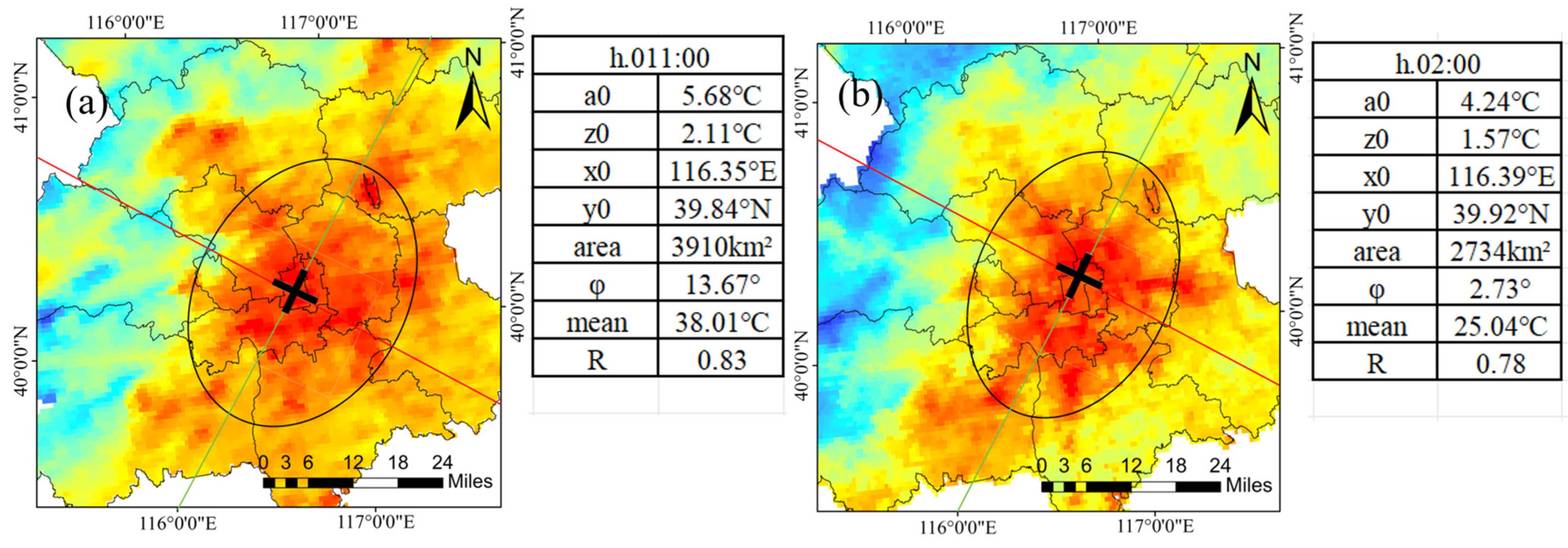

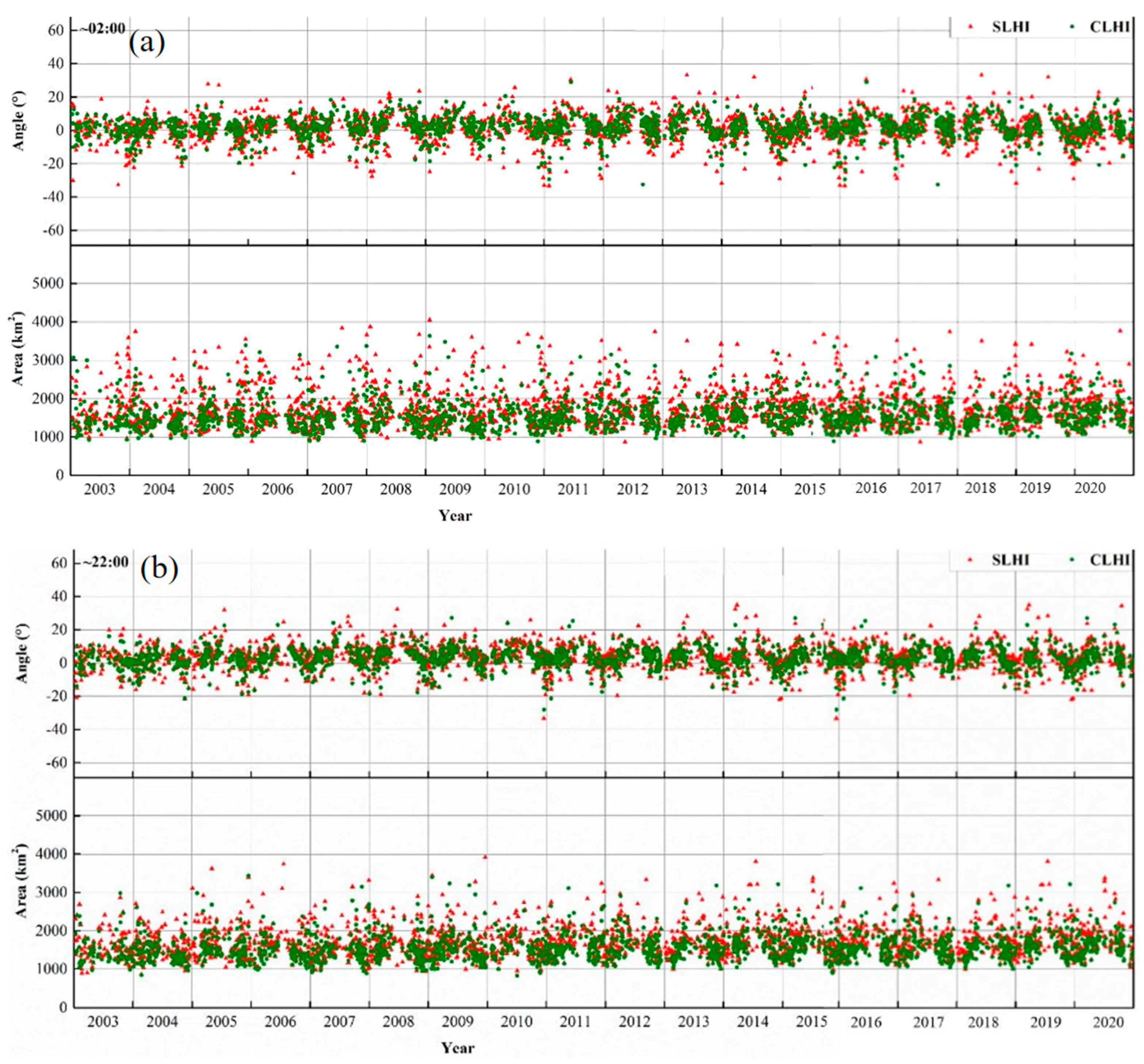
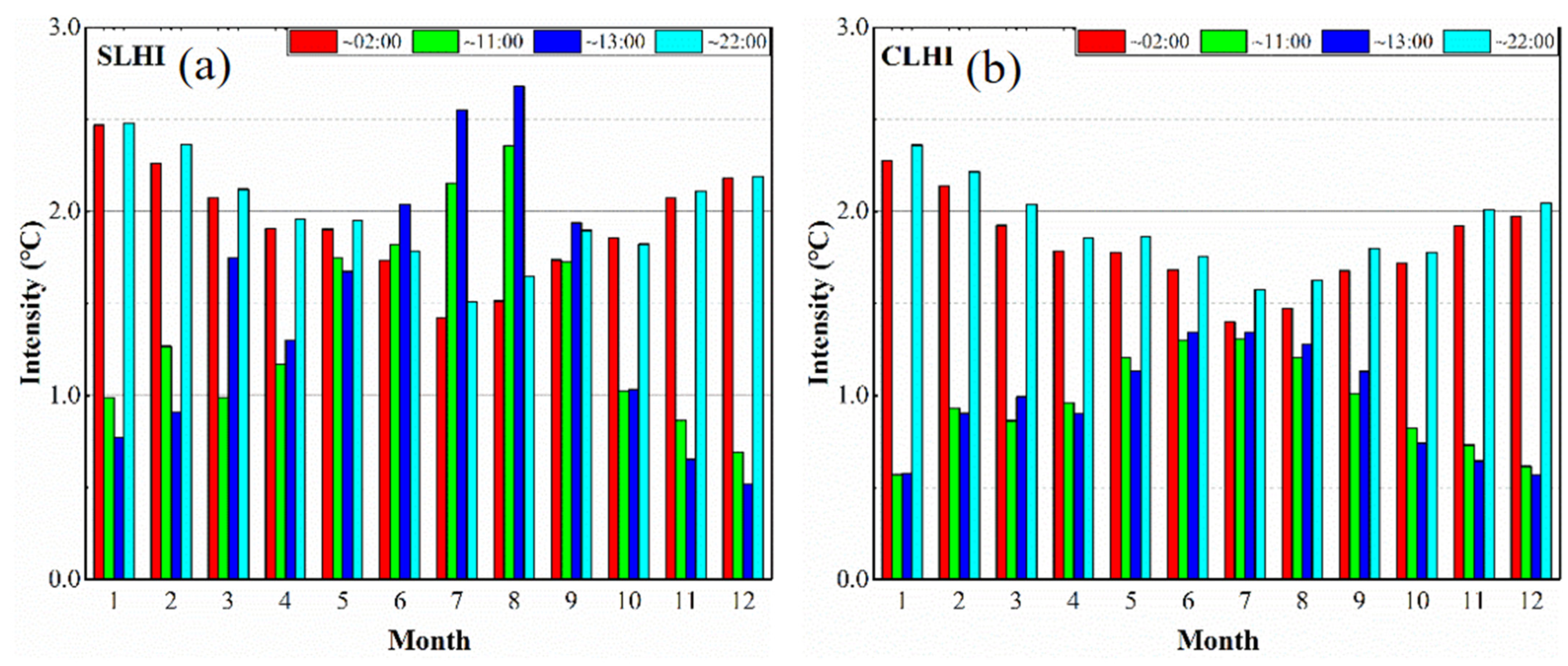
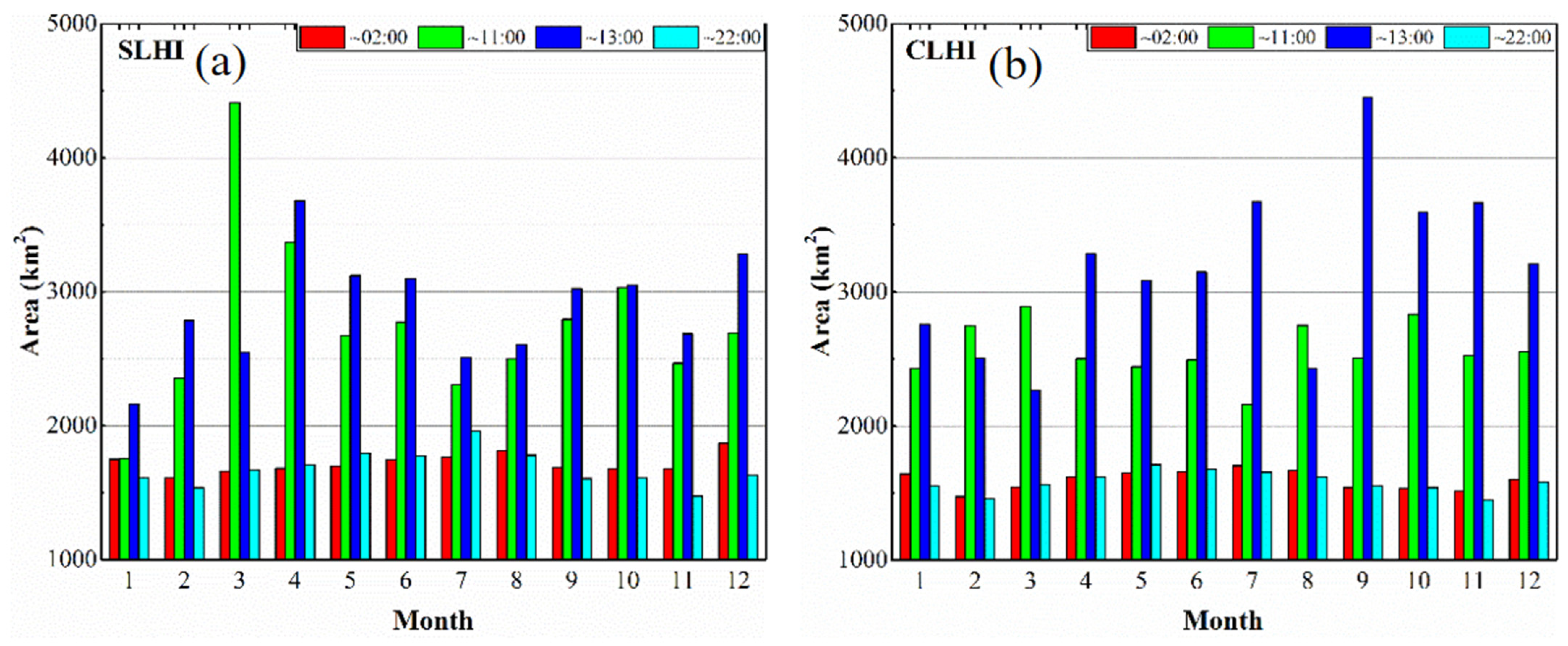
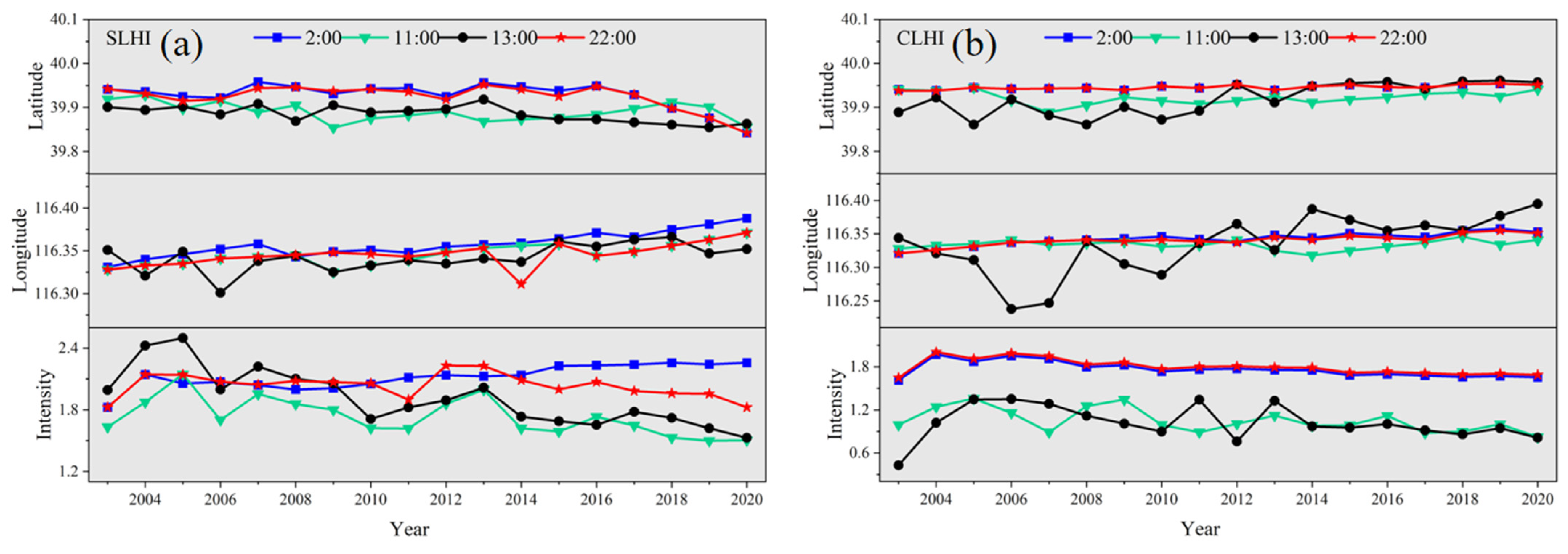


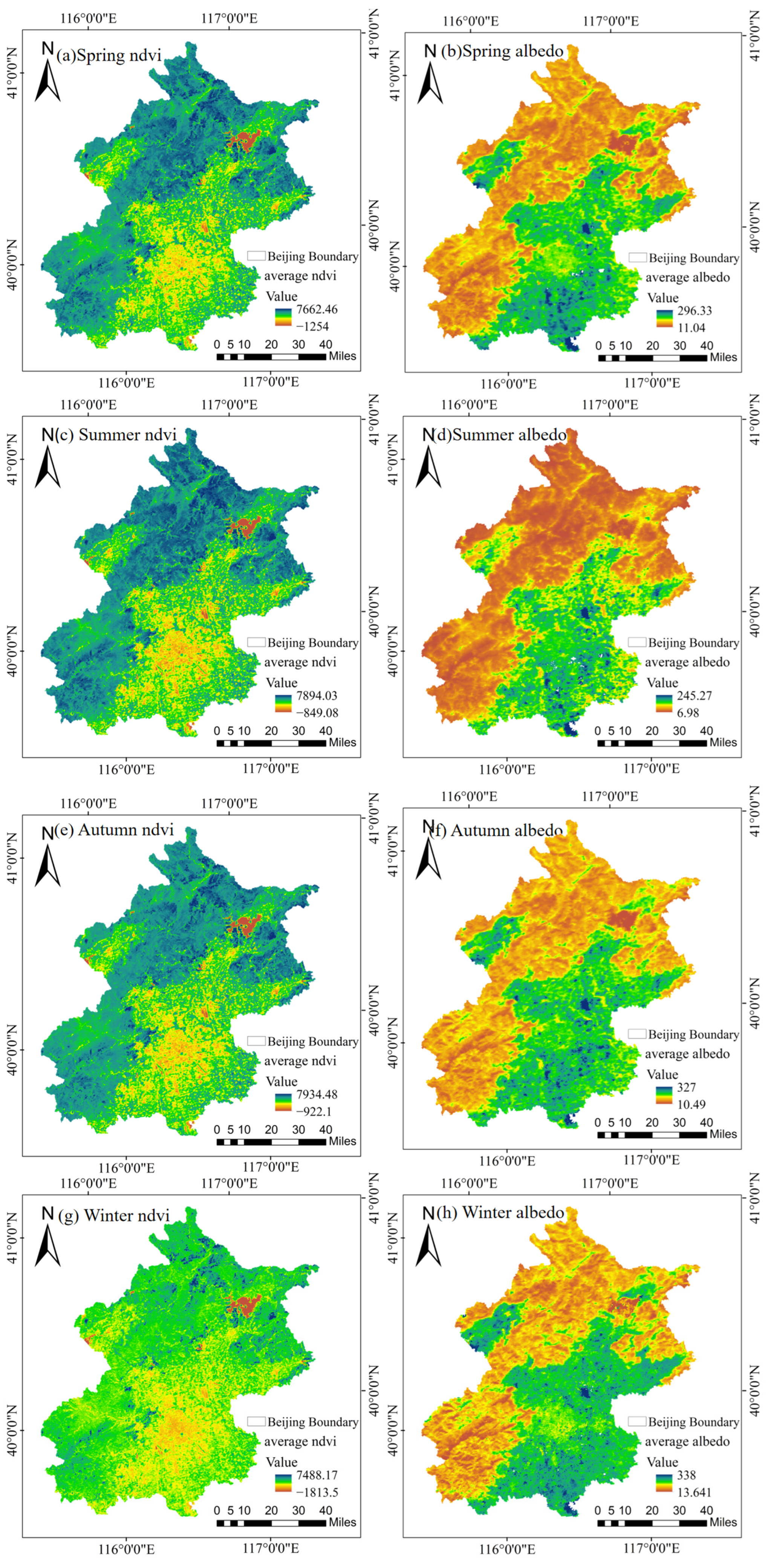
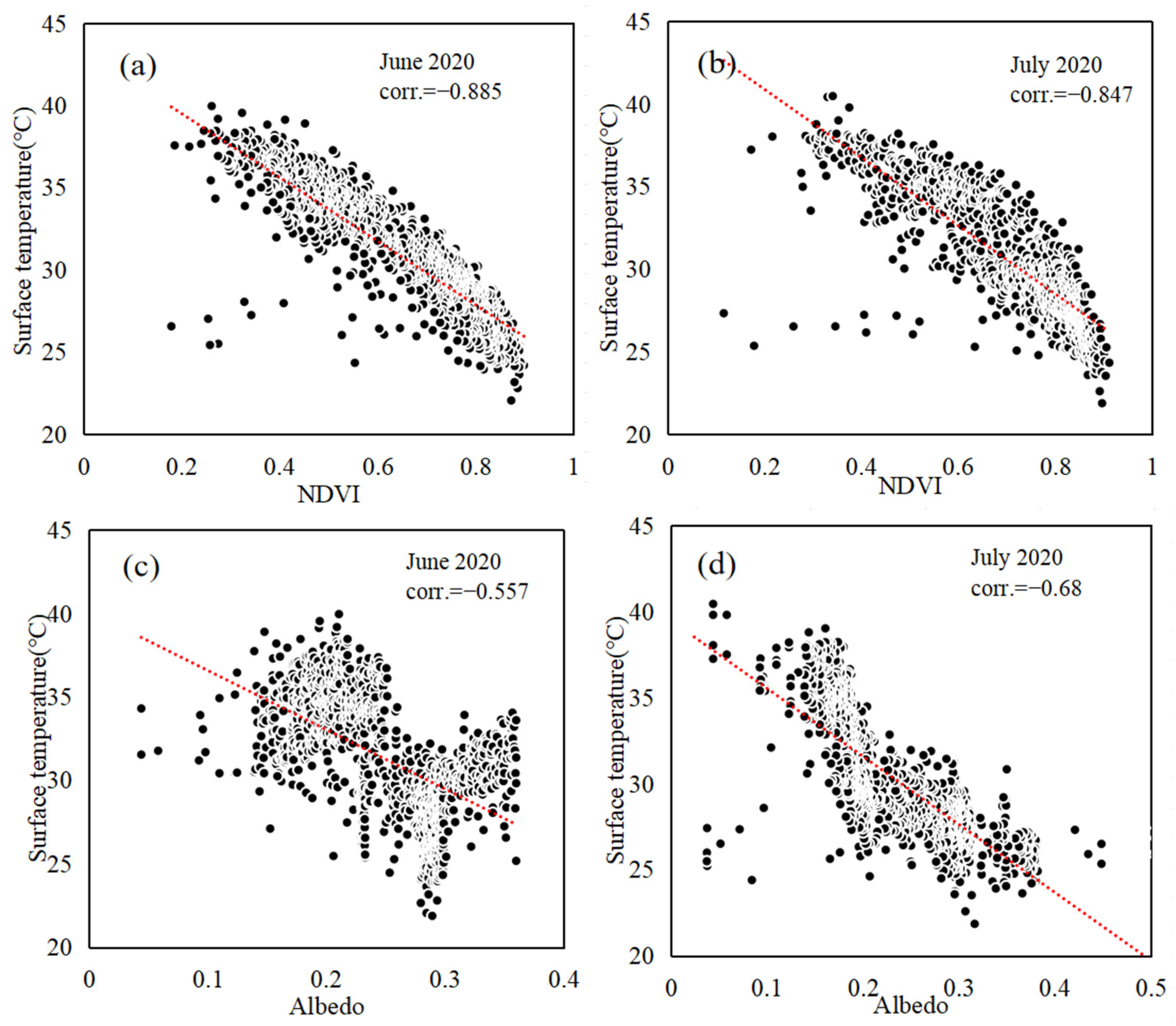
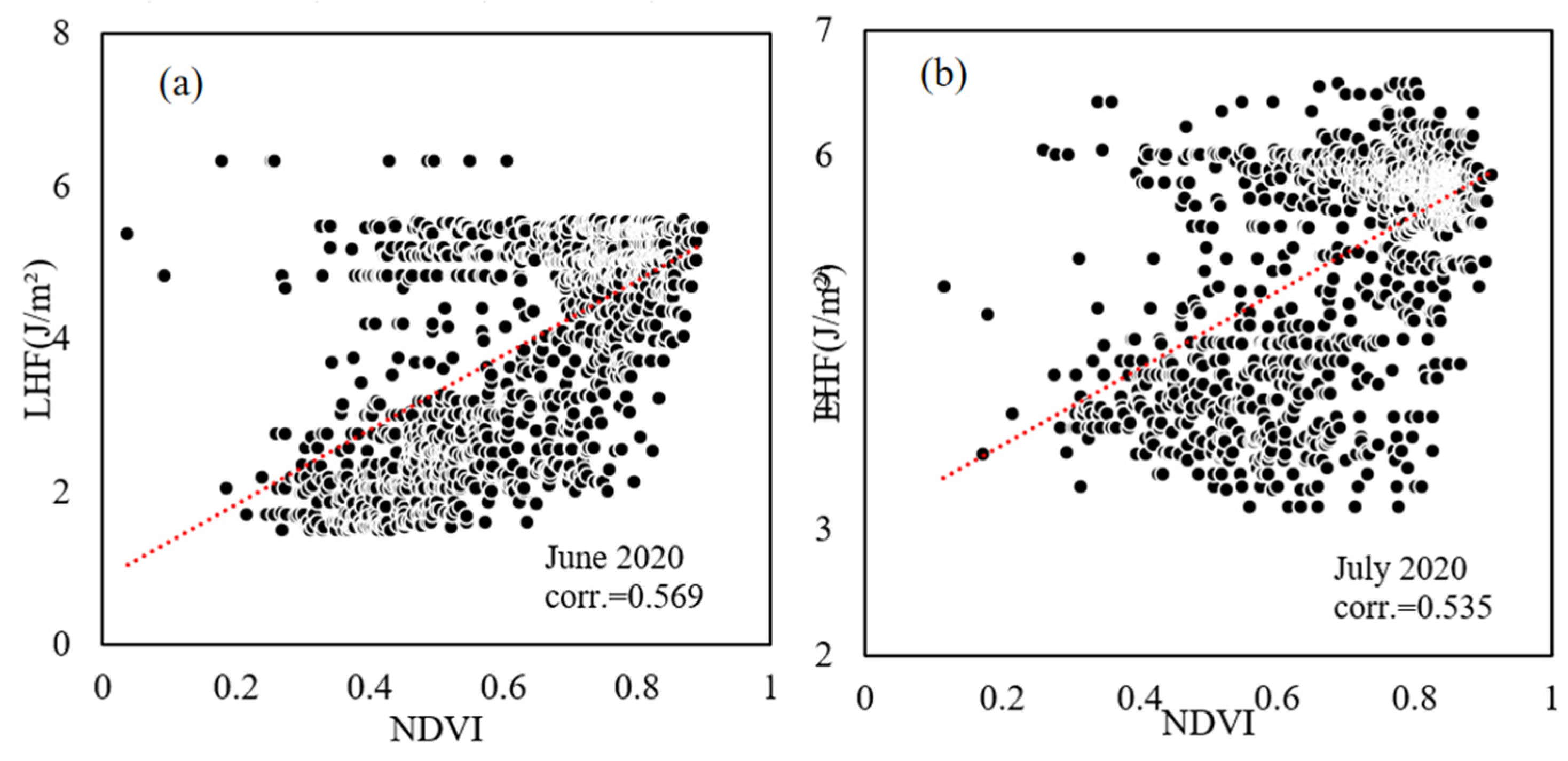

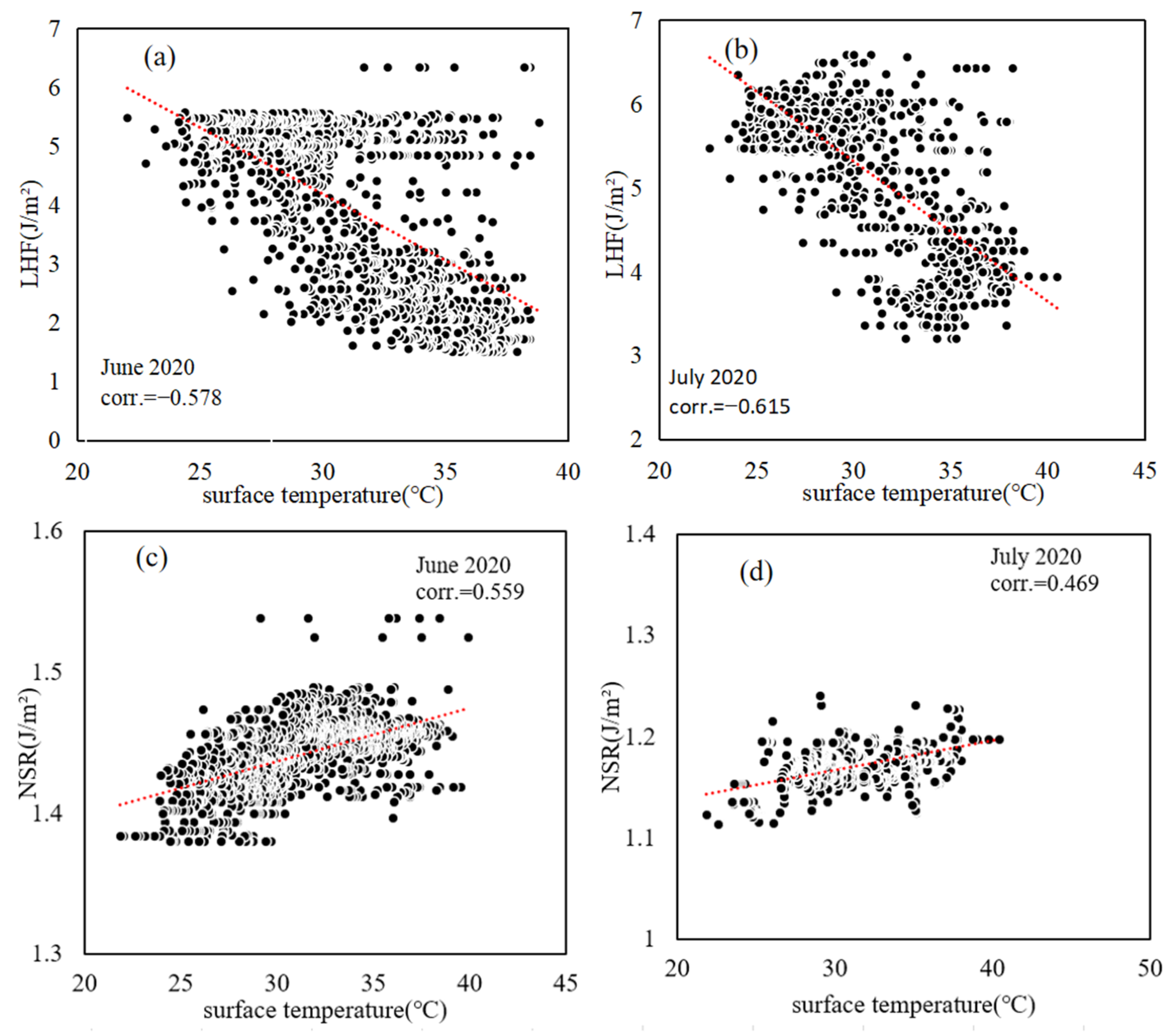
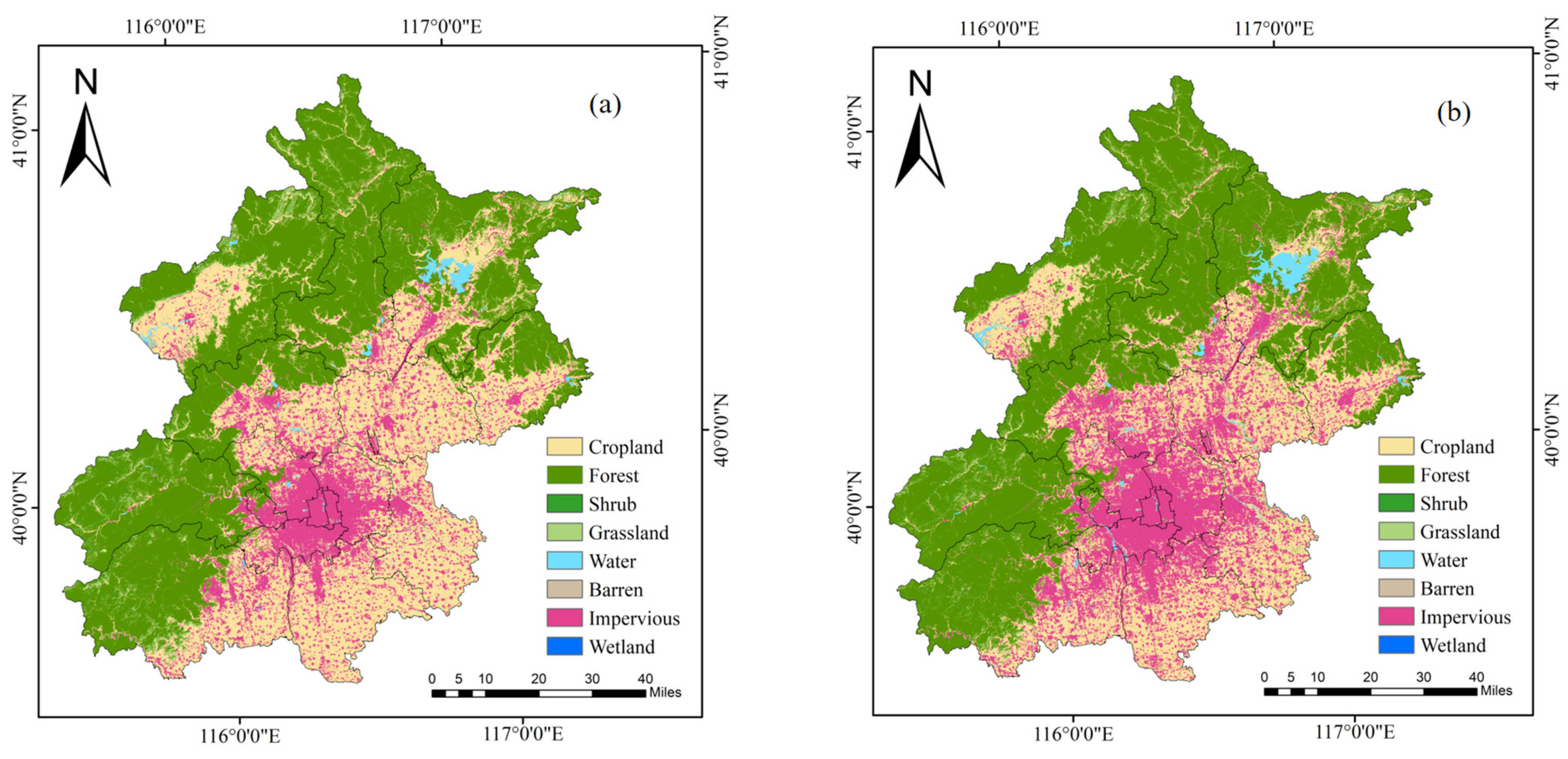
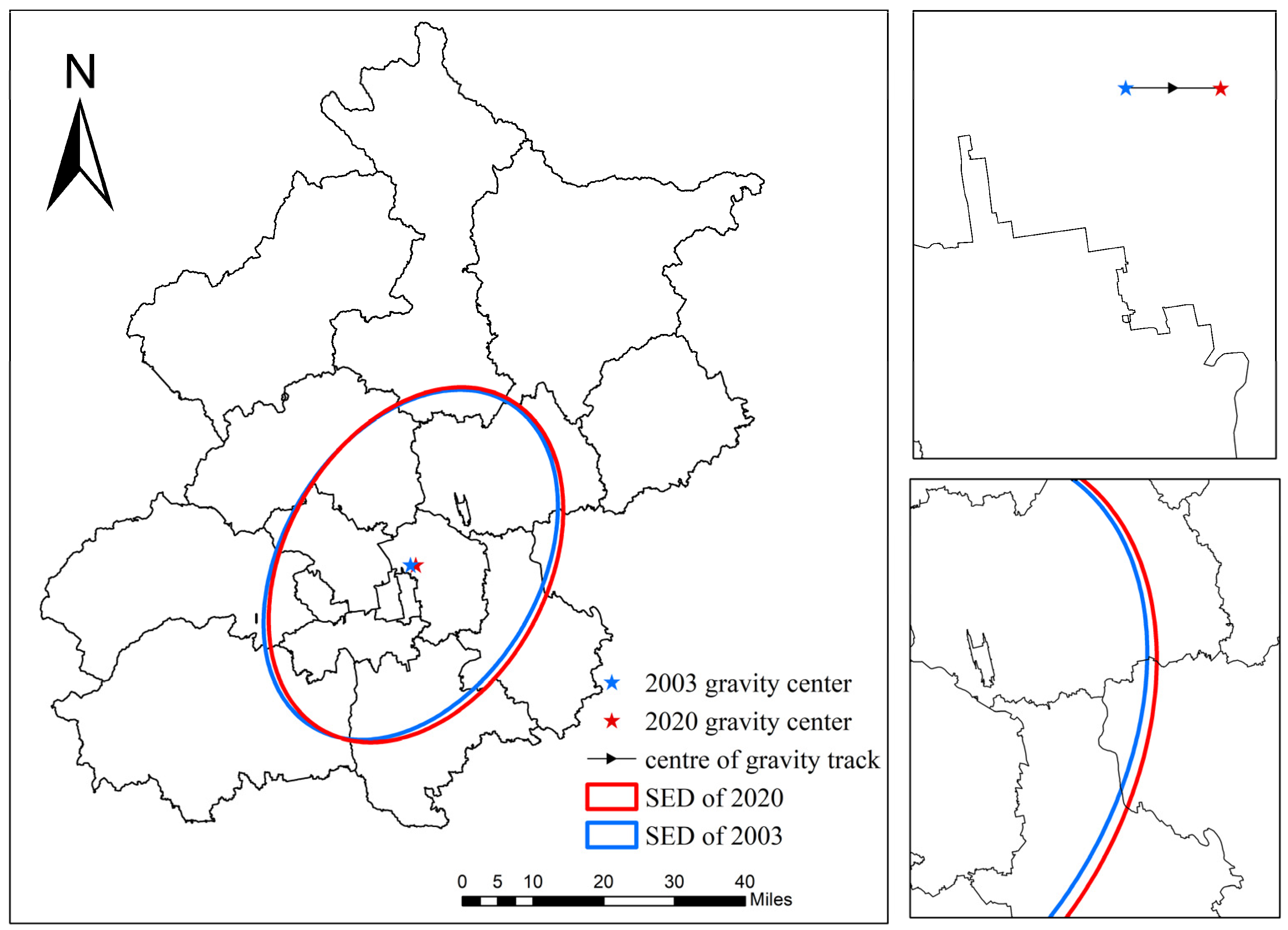
Disclaimer/Publisher’s Note: The statements, opinions and data contained in all publications are solely those of the individual author(s) and contributor(s) and not of MDPI and/or the editor(s). MDPI and/or the editor(s) disclaim responsibility for any injury to people or property resulting from any ideas, methods, instructions or products referred to in the content. |
© 2024 by the authors. Licensee MDPI, Basel, Switzerland. This article is an open access article distributed under the terms and conditions of the Creative Commons Attribution (CC BY) license (https://creativecommons.org/licenses/by/4.0/).
Share and Cite
Yuan, D.; Zhang, L.; Fan, Y.; Sun, W.; Fan, D.; Zhao, X. Spatio-Temporal Analysis of Surface Urban Heat Island and Canopy Layer Heat Island in Beijing. Appl. Sci. 2024, 14, 5034. https://doi.org/10.3390/app14125034
Yuan D, Zhang L, Fan Y, Sun W, Fan D, Zhao X. Spatio-Temporal Analysis of Surface Urban Heat Island and Canopy Layer Heat Island in Beijing. Applied Sciences. 2024; 14(12):5034. https://doi.org/10.3390/app14125034
Chicago/Turabian StyleYuan, Debao, Liuya Zhang, Yuqing Fan, Wenbin Sun, Deqin Fan, and Xurui Zhao. 2024. "Spatio-Temporal Analysis of Surface Urban Heat Island and Canopy Layer Heat Island in Beijing" Applied Sciences 14, no. 12: 5034. https://doi.org/10.3390/app14125034






